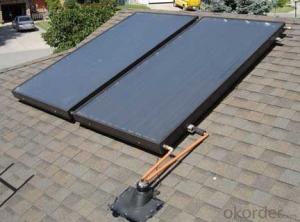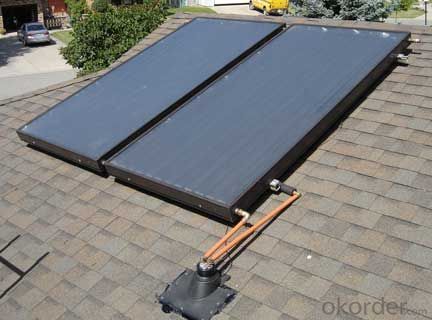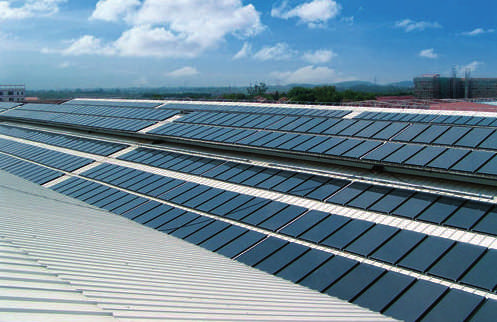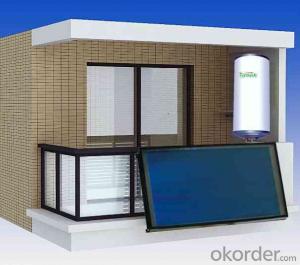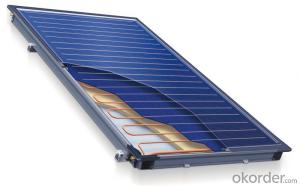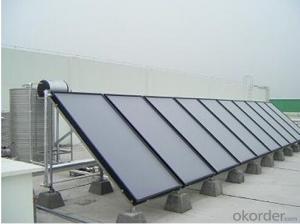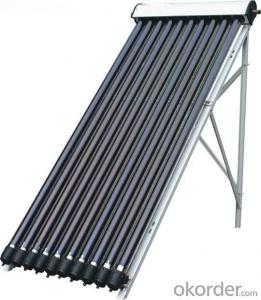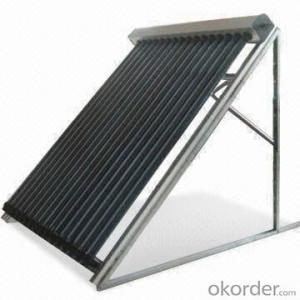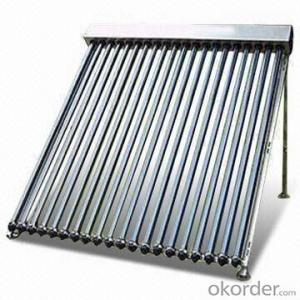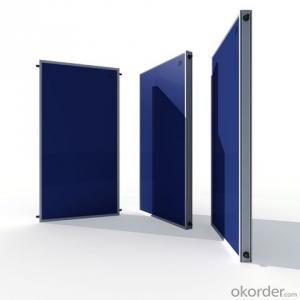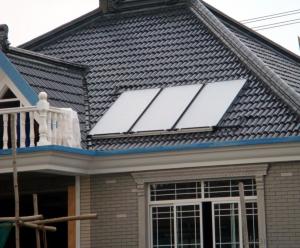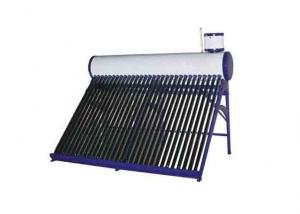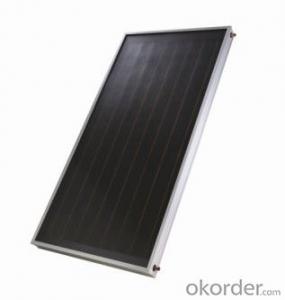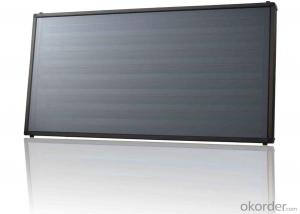Backyard Solar Collectors:Sunnyrain Heat Pipe Solar Collector, Solar Heat Pipe Vacuum Tube, Solar Thermal Collector
- Loading Port:
- Shanghai
- Payment Terms:
- TT OR LC
- Min Order Qty:
- 500 pc
- Supply Capability:
- 10000 pc/month
OKorder Service Pledge
OKorder Financial Service
You Might Also Like
Brief Introduction of solar heat pipe
1) The products use super heat condition pipe and has a good effect of heat exchange.
2) The insulation layers use the up-to-date technology and has a good effect of temperature preservation which allows the water to stay warm for about 70 hours
3) Superior heat-preservation ensured by one-off molding polyurethane foam with thickness 50-60mm
4) Stable and reliable performance,well wind resistance
5) Meet the mankind healthy bath standard,the material of inner tank is SUS304-2Bstainless steel plate,the silica gel ring sealing has a long life against the erosion and it do no harm to health.
Main Advantages of solar heat pipe:
1.No scaling2.No blasting3.water-tight4.Anti aging5.low temperature-resistant6.high temperature-resistant 7.Resistant to high temperature8.fast heat transfer9.high heat conductivity10.bearing pressure
1)Highly efficient zbsorber of high performance with daily average effciency over 40%-50%
2)Start up quickly heat pipe transfer the heat energy into the storage tank in one condition
3)With stand pressure of 0.2Mpa,can be connected directly with city water pipe
4)Highly efficient insulation with polyurethane foam
5)Can be used all year round even in the cold weather
6)Automatically controlled
7)Highly heat absorber and less in heat losing
8)For both flat roof and slope roof

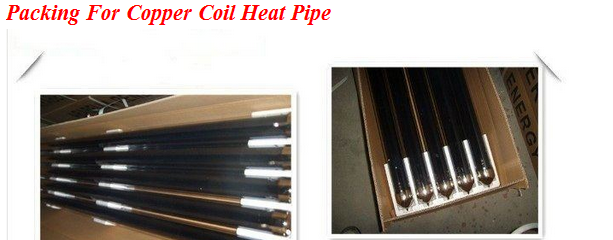
- Q: Can solar collectors be used for heating water for educational institutions?
- Yes, solar collectors can definitely be used for heating water in educational institutions. Solar water heaters are a sustainable and cost-effective solution for meeting the hot water demands of schools, colleges, and universities. These institutions often have a high requirement for hot water due to the presence of numerous students and faculty members. Solar collectors, also known as solar thermal panels, capture energy from the sun and convert it into heat. This heat can then be used to warm water for various purposes, such as showers, kitchen use, and heating systems. By utilizing solar collectors, educational institutions can significantly reduce their reliance on traditional energy sources like electricity or gas, thereby decreasing their carbon footprint and contributing to a greener environment. The installation of solar water heating systems can provide numerous benefits for educational institutions. Firstly, it allows them to save on their energy bills as the sun's energy is free. This cost savings can be redirected towards other educational programs or facility improvements. Additionally, utilizing solar energy aligns with the educational institutions' commitment to sustainability and can serve as an educational tool for students to learn about renewable energy and environmental conservation. Solar water heating systems are versatile and can be designed to meet the specific hot water demands of educational institutions. The size and number of solar collectors can be customized based on the institution's requirements, ensuring an adequate supply of hot water throughout the year. Furthermore, solar water heating systems are reliable and require minimal maintenance. With proper installation and routine check-ups, these systems can have a long lifespan, ensuring a consistent supply of hot water for educational institutions for many years. In conclusion, solar collectors are an excellent choice for heating water in educational institutions. They offer cost savings, contribute to sustainability efforts, and provide educational opportunities for students. By harnessing the power of the sun, educational institutions can meet their hot water demands while reducing their environmental impact.
- Q: Can solar collectors be used in solar thermal drying?
- Yes, solar collectors can be used in solar thermal drying. Solar collectors can capture and convert sunlight into heat energy, which can then be used to heat air or water for drying purposes in solar thermal drying systems. This renewable energy source can be utilized to efficiently and sustainably dry various agricultural products, crops, or other materials.
- Q: Can solar collectors be used for heating asphalt in road construction?
- Yes, solar collectors can be used for heating asphalt in road construction. Solar thermal technology can be utilized to heat the asphalt mix during the production process, reducing the reliance on fossil fuels and minimizing greenhouse gas emissions. This sustainable approach can contribute to more environmentally friendly road construction practices.
- Q: Can solar collectors be used for heating greenhouses in winter?
- Yes, solar collectors can be used for heating greenhouses in winter. Solar collectors, such as solar panels or solar water heaters, can capture and convert sunlight into heat energy. This heat energy can then be used to warm the greenhouse during winter months, providing a sustainable and cost-effective solution for maintaining optimal temperatures for plant growth.
- Q: Can solar collectors be used for heating car storage facilities?
- Yes, solar collectors can be used for heating car storage facilities. Solar thermal collectors are designed to capture the sun's energy and convert it into heat, which can then be used for various purposes such as heating air or water. By installing solar collectors on the roof or walls of a car storage facility, the captured heat can be used to maintain a comfortable temperature inside the facility, reducing the need for traditional heating methods and saving energy costs.
- Q: What are the different types of solar collectors?
- There are three main types of solar collectors: flat-plate collectors, evacuated tube collectors, and parabolic trough collectors.
- Q: Can solar collectors be used for drying lumber or wood products?
- Yes, solar collectors can be used for drying lumber or wood products. Solar collectors can provide a source of heat energy that can be used to dry wood by circulating warm air or using solar panels to convert sunlight into electricity for heating. This natural and sustainable method of drying lumber can be cost-effective and environmentally friendly.
- Q: Can solar collectors be used in electric vehicle charging stations?
- Yes, solar collectors can be used in electric vehicle charging stations. Solar panels can be installed at charging stations to generate clean and renewable energy from the sun, which can then be used to charge electric vehicles. This not only reduces the reliance on traditional power sources but also helps in minimizing greenhouse gas emissions and promoting sustainable transportation.
- Q: Can solar collectors be used for generating electricity on college campuses?
- Yes, solar collectors can certainly be used for generating electricity on college campuses. Solar collectors, also known as solar panels, are designed to convert sunlight into electricity through the photovoltaic effect. College campuses are typically large and have ample rooftop space, making them ideal for installing solar panels. By harnessing the power of the sun, college campuses can significantly reduce their dependence on fossil fuels and lower their carbon footprint. Additionally, solar energy is a renewable source of energy, meaning it is sustainable and does not deplete natural resources. Installing solar collectors on college campuses can provide clean and reliable electricity, contributing to a more sustainable and environmentally friendly campus. Furthermore, colleges can also explore the option of integrating solar collectors into their curriculum, allowing students to learn about renewable energy technologies and gain hands-on experience in the field.
- Q: Can solar collectors be used in street lighting?
- Yes, solar collectors can be used in street lighting. Solar street lights are becoming increasingly popular as they harness the energy from the sun to power the lights. These collectors absorb sunlight during the day, converting it into electricity, which is stored in batteries. The stored energy is then used to illuminate the street lights at night, making them an efficient and environmentally friendly option for street lighting.
Send your message to us
Backyard Solar Collectors:Sunnyrain Heat Pipe Solar Collector, Solar Heat Pipe Vacuum Tube, Solar Thermal Collector
- Loading Port:
- Shanghai
- Payment Terms:
- TT OR LC
- Min Order Qty:
- 500 pc
- Supply Capability:
- 10000 pc/month
OKorder Service Pledge
OKorder Financial Service
Similar products
Hot products
Hot Searches
